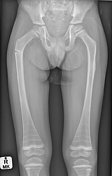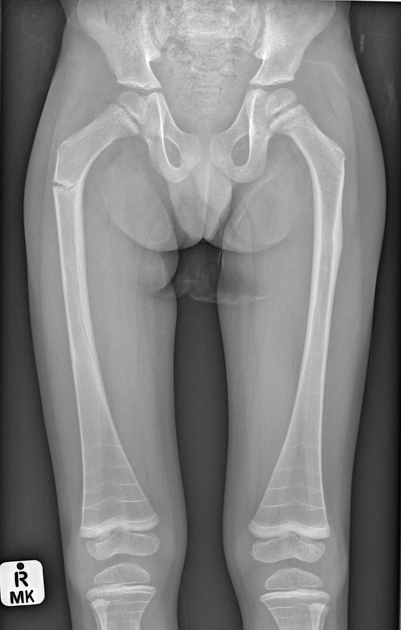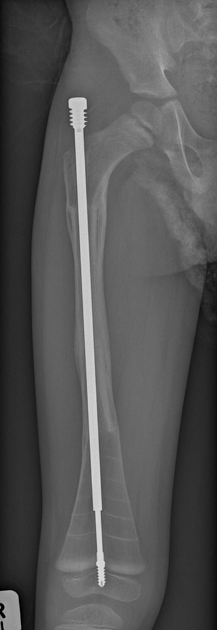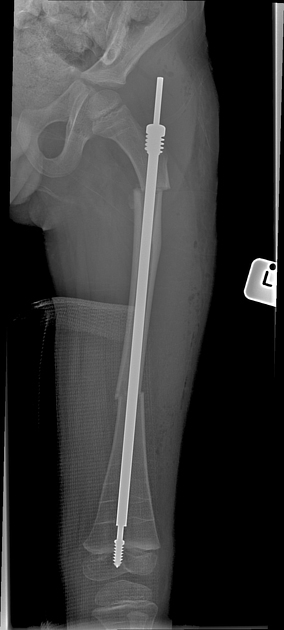Presentation
Known congenital connective tissue disorder. Presents with acute onset of right femoral pain and limited mobility, with the absence of any witnessed trauma.
Patient Data




There is a partial or incomplete, horizontal, non-comminuted fracture of the right proximal diaphysis involving the lateral cortex, distal to the greater trochanter.
There is no underlying occult bone lesion.
There is generalized osteopenia.
There are bilateral, dense/sclerotic horizontal lines within the distal femoral meta diaphyses and proximal tibial metaphyses.
There is bilateral medial femoral cortical thickening and developing asymmetric left lateral cortical thickening, representing a site of a potential left femoral atypical fracture!



A 6-month follow-up of the right femur confirms an intramedullary rod fixating the femur with multiple healed osteotomy sites and persistent osteopenia with the previously identified Zebra stripes.



There have been prophylactic osteotomies of the left femur with an intramedullary rod.
Case Discussion
The patient has known osteogenesis imperfecta (OI) type 1 (the mildest form) on treatment with pamidronate disodium.
The sclerotic bands represent dense bone formation during bisphosphonate therapy in these patient cohorts, usually given in a cyclical format to treat the osteoporosis that is usually present. This is known as the Zebra stripe sign!
In this instance, there is a suspected atypical femoral fracture related to the bisphosphonate therapy demonstrated by the partial lateral right femoral diaphyseal fracture, a typical site for these fractures. This is complicated by the inherent background of osteoporosis and fragile bones in a setting of the known osteogenesis imperfecta with the confirmed absence of any minor or major trauma, and the absence of any "overuse" in an infant child.
There is an increased risk of an atypical left femoral fracture as evidenced by the asymmetric left lateral proximal diaphyseal cortical thickening.




 Unable to process the form. Check for errors and try again.
Unable to process the form. Check for errors and try again.